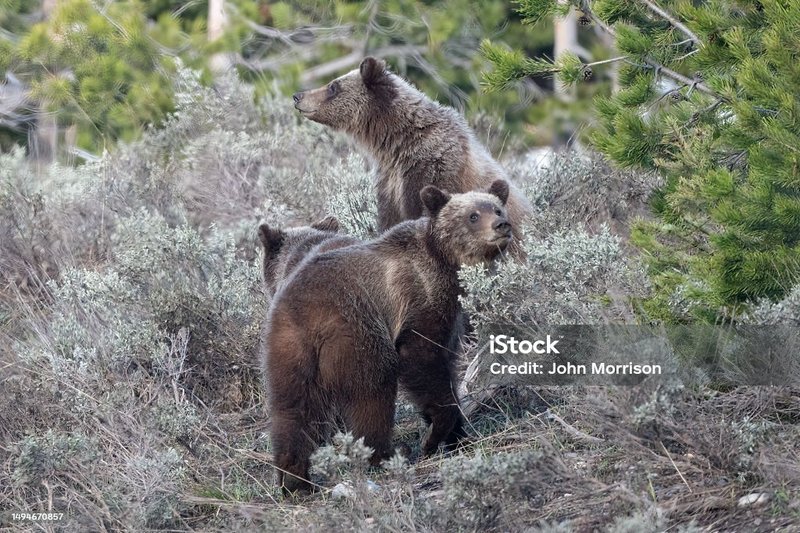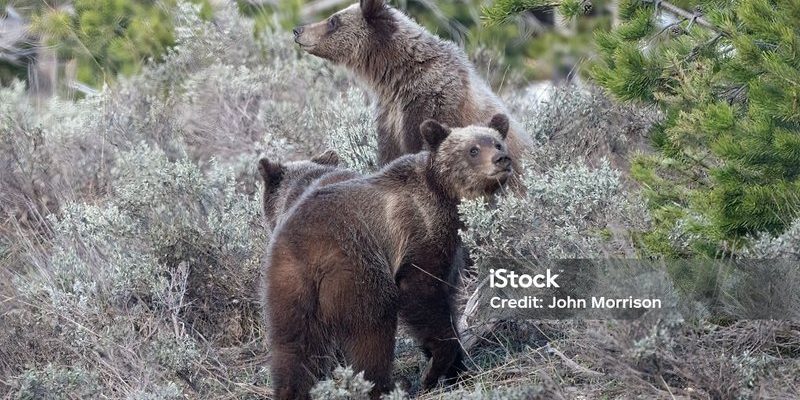
You might be wondering why we should care about the role of grizzly bears. Well, their presence affects the health of their ecosystem, and understanding this can shed light on broader environmental issues. Let’s dive into the world of grizzly bears and see what makes them so crucial in maintaining balance in nature.
Grizzly Bears: The Apex Predators
Grizzly bears are considered apex predators, meaning they sit at the top of the food chain. This status allows them to regulate populations of other species. By hunting animals like deer and elk, they help keep these populations in check. If there are too many deer, for example, they can overgraze vegetation, which can lead to habitat destruction.
Interestingly, grizzlies don’t just rely on meat; their diet is quite varied. They’re omnivores, munching on everything from berries and nuts to fish. When they catch salmon during spawning season, they transport nutrients from rivers to forests through their scat. This movement of nutrients promotes plant growth, benefiting many other species in the area. It’s a beautiful cycle of life that illustrates the intricate connections within ecosystems.
Seed Dispersal: A Hidden Talent
Did you know grizzly bears play a huge part in seed dispersal? When they indulge in fruits and berries, they consume seeds along with their tasty treats. As the bears roam and later relieve themselves, these seeds are dropped in different locations, helping new plants to grow.
This process is essential for plant diversity. Imagine if all the plants in a forest were the same; it wouldn’t be very vibrant, would it? With grizzly bears moving through the landscape, they contribute to the growth of various plant species, creating a healthier, more diverse habitat for other animals and insects. It’s like a gardener who unknowingly helps their garden thrive while just looking for a snack!
Scavengers and the Circle of Life
Grizzly bears also play a crucial role when it comes to scavenging. When these bears consume a meal, they often leave behind leftovers. Other animals, like coyotes, foxes, and smaller birds, benefit from these scraps. This scavenging helps to keep the ecosystem clean and provides food for those who need it.
Here’s the thing: when grizzly bears die, their bodies become a source of nutrients for the soil and other animals. This process, called decomposition, enriches the environment, promoting new plant and animal life. Nature really knows how to recycle!
Watershed Health and Ecosystem Balance
Grizzly bears are also instrumental in maintaining healthy watersheds. Their foraging habits can influence the flow of rivers and streams. By digging for roots or creating wallows in the ground, they can help manage water runoff, which is essential during rainy seasons.
Moreover, their presence can also impact the health of aquatic ecosystems. The nutrients they deposit into streams and rivers through their scat boosts the productivity of aquatic plants and insects. These, in turn, support fish populations, creating a balanced aquatic ecosystem. It’s a ripple effect—each bear contributes to maintaining the health of both land and water.
Grizzly Bears as Indicators of Environmental Health
Grizzly bears are often seen as indicators of environmental health. When their populations are thriving, it typically suggests that their habitat is also healthy and sustainable. Conversely, declining grizzly populations can signal underlying problems like habitat destruction or climate change.
Monitoring grizzly bears can offer valuable insights into the broader health of the ecosystem. Researchers often study bear populations to understand the effects of human activity, pollution, and climate change. Their well-being can tell us a lot about how our actions impact the natural world.
The Importance of Conservation
Given their crucial role in the ecosystem, conserving grizzly bears is essential. Habitat loss, climate change, and hunting have all contributed to declines in bear populations across North America. Protecting these magnificent creatures means protecting the entire ecosystem they support.
Conservation efforts involve safeguarding their habitats, creating wildlife corridors, and raising awareness about the importance of these animals. We all have a part to play in ensuring that grizzly bears continue to thrive for future generations. Supporting local conservation groups, reducing waste, and advocating for sustainable practices can make a difference.
The Bear Necessities: Community and Education
Finally, community involvement and education are vital for grizzly bear conservation. By engaging local communities—especially those living near bear habitats—we can promote coexistence. Workshops and educational programs can help people understand how to live alongside these powerful animals safely.
Encouraging respect for nature not only benefits grizzly bears but our ecosystems as a whole. It’s important for us to share knowledge and create a culture that values wildlife and its preservation. When people see the beauty and importance of grizzly bears in their environment, they are more likely to take action to protect them.
In summary, grizzly bears are much more than just iconic wildlife. They play a *pivotal role* in maintaining the balance of their ecosystems, from seed dispersal and scavenging to being indicators of environmental health. Their contributions highlight the interconnectedness of nature and the importance of preserving these magnificent creatures. By understanding their role, we can all play a part in ensuring a richer, healthier environment for future generations.

